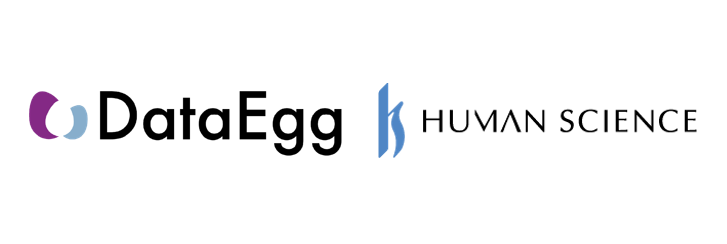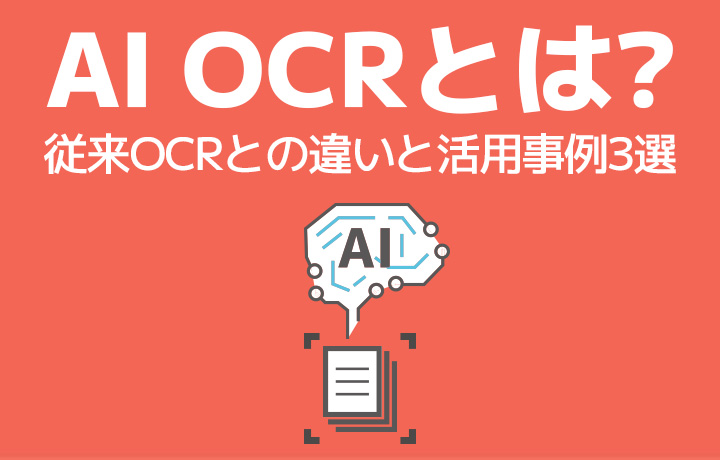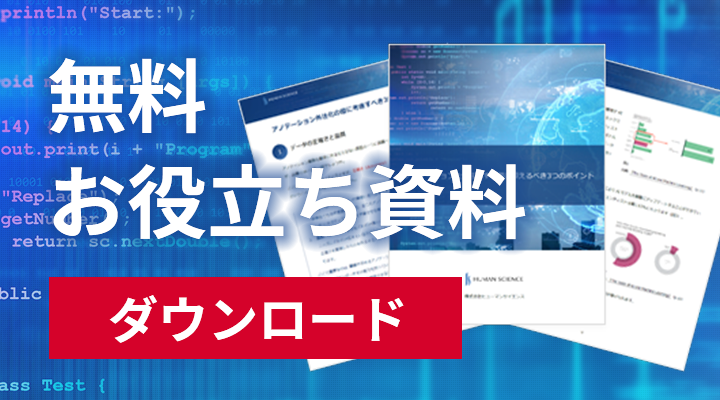
- Table of Contents
-
- 1. Introduction
- 2. What is Bilingual Data Preparation for LLMs? Explanation of Necessary Tasks
- 2-1. Specific Tasks
- 2-2. Why Is It Important?
- 3. Reasons to Outsource LLM Data Preparation
- 3-1. The Rare Combination of Language Skills, AI Knowledge, and Preparation Skills
- 3-2. A work system capable of processing large volumes of data is necessary
- 3-3. Manual data preparation requires enormous time and cost
- 4. Five preparation points to check before outsourcing
- 4-1. Clarification of objectives
- 4-2. Types and volume of target data
- 4-3. Definition of quality standards
- 4-4. Output Formats and Management of Tags and Meta Information
- 4-5. Security and Handling Restrictions
- 5. What Are the Criteria for Choosing a Data Preparation Contractor?
- 5-1. Track Record of Supported Language Pairs
- 5-2. Understanding the Difference Between "Translation" and "Data Preparation"
- 5-3. Understanding and Responsiveness to LLM Applications
- 5-4. Track Record in Specialized Fields
- 5-5. Security System and NDA Compliance
- 6. Summary: Entrust Your Tasks in LLM Development to Human Science
- 6-1. Extensive Track Record of Over 48 Million Pieces of Training Data Created
- 6-2. Resource Management Without Using Crowdsourcing
- 6-3. Support for Not Just Curation and Annotation, but Also Creation and Structuring of Generative AI LLM Datasets
- 6-4. Complete Security Room in Our Company
1. Introduction
In recent years, as the development of multilingual large language models (LLMs) has rapidly progressed, one of the factors that determine their performance is the preparation, organization, and correction of "high-quality bilingual data for LLMs." If the pairs of translated segments (parallel data) used as training data are inaccurate, there is a risk that errors and biases will occur in the model's output.
However, handling data preparation, maintenance, and correction across multiple languages and domains solely in-house presents significant challenges in terms of resources and quality, leading an increasing number of companies to consider outsourcing.
This article introduces key points to keep in mind when outsourcing bilingual data preparation, maintenance, and correction for LLM development. Companies developing LLMs who are struggling with choosing a reliable partner or how to proceed with requests should find this helpful.
2. What is Bilingual Data Preparation for LLMs? Explanation of Necessary Tasks
One of the most important steps in LLM training and fine-tuning is the "preparation and correction of bilingual data." This is a preprocessing step that organizes existing parallel data so that the model can learn accurately, and it can be said to be the core part of data preparation for LLMs.
2-1. Specific Tasks
Tasks involved in the preparation and correction of bilingual data include the following:
・Standardization of notation
Example: Correcting inconsistencies such as full-width and half-width variations in alphanumeric characters, translation term fluctuations, and terminology inconsistencies
・Noise removal
Example: Eliminating errors specific to machine translation such as mistranslations, grammatical mistakes, and contextually inappropriate errors
・Natural corrections aligned with context
Example: Adjusting unnatural phrasing and literal expressions to translations that fit the context
These tasks are unassuming and time-consuming, but they directly contribute to improving translation accuracy and optimizing learning efficiency.
2-2. Why Is It Important?
Especially for language pairs like Japanese and English, where word order and semantic structure differ significantly, even small errors can lead to incorrect learning by the LLM and greatly affect the quality of its output.
Therefore, using highly accurate parallel data that ensures "semantic accuracy," "contextual naturalness," and "format consistency" at the data preparation stage is the key to maximizing the performance of the LLM.
3. Reasons to Outsource LLM Data Preparation
The preparation and correction of bilingual data for LLM data preparation is an extremely important process directly linked to model quality. However, since its execution requires advanced expertise and substantial resources, many LLM development companies choose to outsource this work.
● Reasons why it cannot be handled by in-house staff alone
3-1. The Rare Combination of Language Skills, AI Knowledge, and Preparation Skills
High-quality refinement requires not only advanced translation skills but also an understanding of LLM learning characteristics and data structures. Personnel possessing all of these qualities are limited, making it realistically difficult to complete the work solely in-house.
3-2. A work system capable of processing large volumes of data is necessary
In multilingual support and large-scale model development, it is not uncommon to require the preparation of tens of thousands or even hundreds of thousands of bilingual sentence pairs. Such large-scale processing necessitates parallel work by a large number of workers.
3-3. Manual data preparation requires enormous time and cost
There are many processes that require human judgment, such as expression corrections considering context and noise removal, and there are also many areas that cannot be fully automated. If you try to handle everything with only in-house personnel, there is a risk of hindering the LLM model development work that should be the main focus.
Against this backdrop, outsourcing to external partners specializing in bilingual data preparation has become a realistic and strategic approach for LLM development companies to achieve both quality and efficiency.
4. Five preparation points to check before outsourcing
When outsourcing the preparation and correction of bilingual data externally, clearly defining the request details and organizing the necessary information greatly influence the efficiency and quality of the work. Below, we summarize the main points to check before making a request.
4-1. Clarification of objectives
The most important thing is to clearly define the purpose of the prepared data.
・Will it be used as training data for the LLM?
・Will it be used as evaluation data for the model?
・Will it be specialized as fine-tuning data for a specific use?
The required quality and the granularity of the preparation content vary depending on the purpose.
4-2. Types and volume of target data
Next, let's organize what kind of data will be the target for preparation.
・Is it parallel data translated by humans, or is it based on parallel data output by machine translation?
・Is it data owned by your company or publicly available data?
・The quantity (number of items or words) and language pairs (e.g., Japanese-English, Japanese-Chinese, etc.)
These factors affect the difficulty of preparation and the skills required.
4-3. Definition of quality standards
It is also important to share the quality evaluation criteria in advance.
・Whether to use automatic evaluation metrics (such as BLEU, TER)
・Manual evaluation criteria: grammar, naturalness, tone, accuracy of expertise, etc.
・Whether to apply frequently used terms and style guides
If the standard for "how much correction is acceptable" is not clear, it will affect costs and delivery times.
4-4. Output Formats and Management of Tags and Meta Information
It is also necessary to clearly define the format of the delivered data after preparation.
・File format (JSON / TSV / CSV, etc.)
・Whether it is necessary to retain the original text
・Handling of tag information and meta information other than the translation target (e.g., domain, confidence)
This allows the contractor to streamline tool design and work procedures.
4-5. Security and Handling Restrictions
Finally, it is essential to confirm the security policy regarding data handling.
・The necessity of an NDA (Non-Disclosure Agreement)
・Data retention period and disposal methods
・Presence of highly confidential content
Especially if it includes your company’s data or confidential documents, you should also verify the information management system of the contractor in advance.
5. What Are the Criteria for Choosing a Data Preparation Contractor?
When outsourcing the preparation and correction of bilingual data, selecting a vendor solely because they are a "translation company" or an "AI-related vendor" may result in quality and outcomes that fall short of expectations. Especially for data preparation aimed at LLMs, it is important to evaluate from specialized perspectives as outlined below.
5-1. Track Record of Supported Language Pairs
The first thing to check is whether the contractor has strengths in the language pairs your company requires. Especially for Japanese↔English, there are significant differences in word order, expressions, and semantic structure, demanding advanced capabilities beyond typical translation work. Confirm whether they have a proven track record of high-precision data preparation in similar projects.
5-2. Understanding the Difference Between "Translation" and "Data Preparation"
The purpose of the preparation work is not simply to create translations, but to structurally and contextually “organize” the existing data. Therefore, it is important to understand the difference between “translation” and “data preparation” and to have a system capable of consistent processing based on rules and conditions.
5-3. Understanding and Responsiveness to LLM Applications
Whether the contractor understands the characteristics and usage of data for LLMs is also a major point.
For example:
・Differences in the required level of data preparation for training purposes versus evaluation purposes
・Uniformity of expressions suitable for fine-tuning
・Consideration of the impact of noise and data bias
Since vendors who understand and can respond to these are limited, be sure to conduct preliminary hearings.
5-4. Track Record in Specialized Fields
In LLM development for specialized fields (e.g., medical, legal, financial), it is necessary to understand and unify expressions and terminology specific to the domain.
Confirm whether there is experience in data preparation for that field and whether appropriate human resources can be secured.
5-5. Security System and NDA Compliance
Finally, ensuring sufficient protection of data confidentiality is also an essential item.
・Internal security policies and information management systems
・NDA (Non-Disclosure Agreement) execution
・Clear policies on data storage, deletion, and access restrictions
If these are not properly established, there is a risk of information leakage, which could impact the entire project.
By comprehensively evaluating from the above perspectives and selecting the most suitable contractor for your company's objectives and data characteristics, you will directly achieve the preparation of bilingual data for high-quality LLM development.
At Human Science, we have extensive experience in data preparation for LLMs, and translators well-versed in specialized fields support the construction of high-quality data. We can also flexibly respond to projects requiring large volumes of data within short deadlines.
Please feel free to consult with us when considering the preparation of high-quality language data.
6. Summary: Entrust Your Tasks in LLM Development to Human Science
6-1. Extensive Track Record of Over 48 Million Pieces of Training Data Created
At Human Science, we are involved in AI model development projects across various industries, starting with natural language processing, including medical support, automotive, IT, manufacturing, and construction. Through direct transactions with many companies, including GAFAM, we have provided over 48 million high-quality training data. We handle a wide range of training data creation, data labeling, and data structuring, from small-scale projects to long-term large projects with a team of 150 annotators, regardless of the industry.
6-2. Resource Management Without Using Crowdsourcing
At Human Science, we do not use crowdsourcing. Instead, projects are handled by personnel who are contracted with us directly. Based on a solid understanding of each member's practical experience and their evaluations from previous projects, we form teams that can deliver maximum performance.
6-3. Support for Not Just Curation and Annotation, but Also Creation and Structuring of Generative AI LLM Datasets
In addition to labeling for data organization and annotation for identification-based AI systems, Human Science also supports the structuring of document data for generative AI and LLM RAG construction. Since our founding, our primary business has been in manual production, and we can leverage our deep knowledge of various document structures to provide you with optimal solutions.
6-4. Complete Security Room in Our Company
Within our Shinjuku office at Human Science, we have secure rooms that meet ISMS standards. Therefore, we can guarantee security, even for projects that include highly confidential data. We consider the preservation of confidentiality to be extremely important for all projects. When working remotely as well, our information security management system has received high praise from clients, because not only do we implement hardware measures, we continuously provide security training to our personnel.

 Text Annotation
Text Annotation Audio Annotation
Audio Annotation Image & Video Annotation
Image & Video Annotation Generative AI, LLM, RAG Data Structuring
Generative AI, LLM, RAG Data Structuring
 AI Model Development
AI Model Development In-House Support
In-House Support For the medical industry
For the medical industry For the automotive industry
For the automotive industry For the IT industry
For the IT industry




























































































